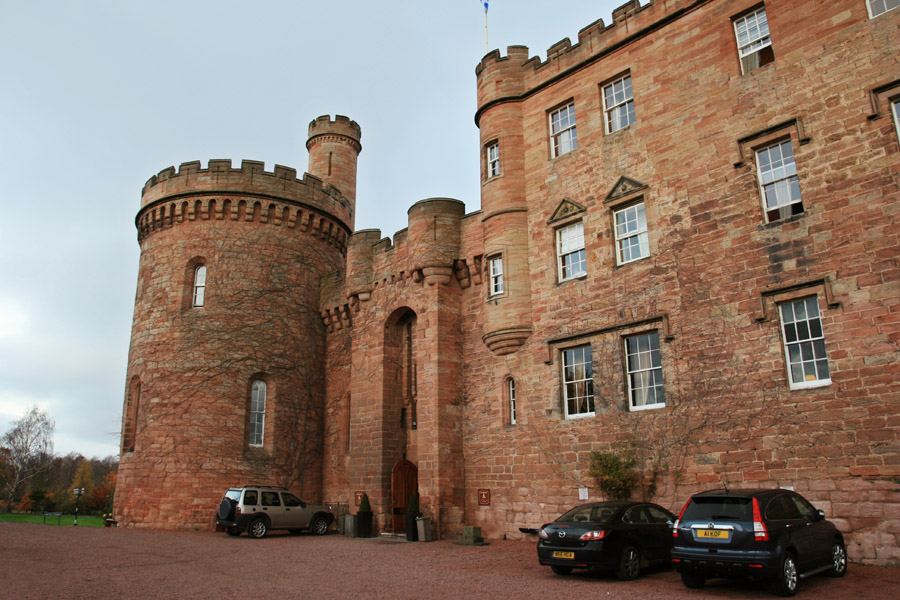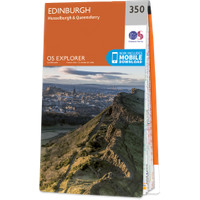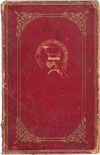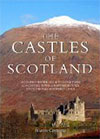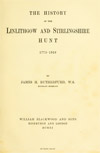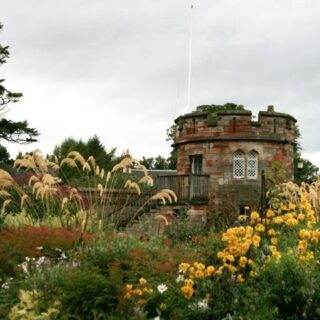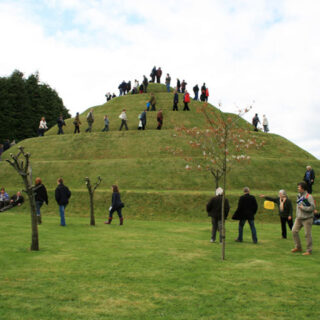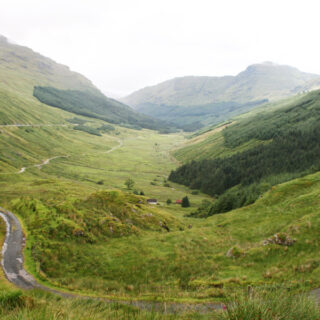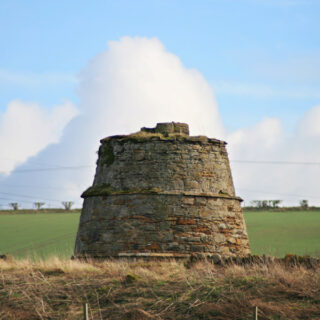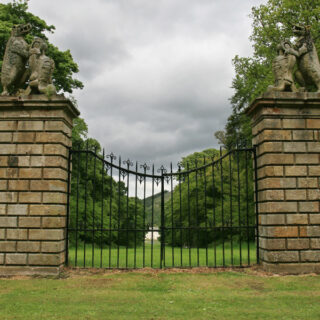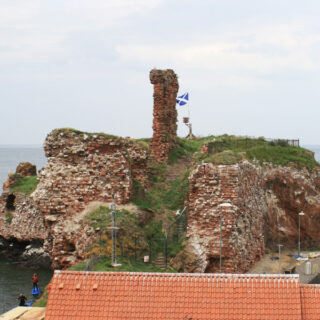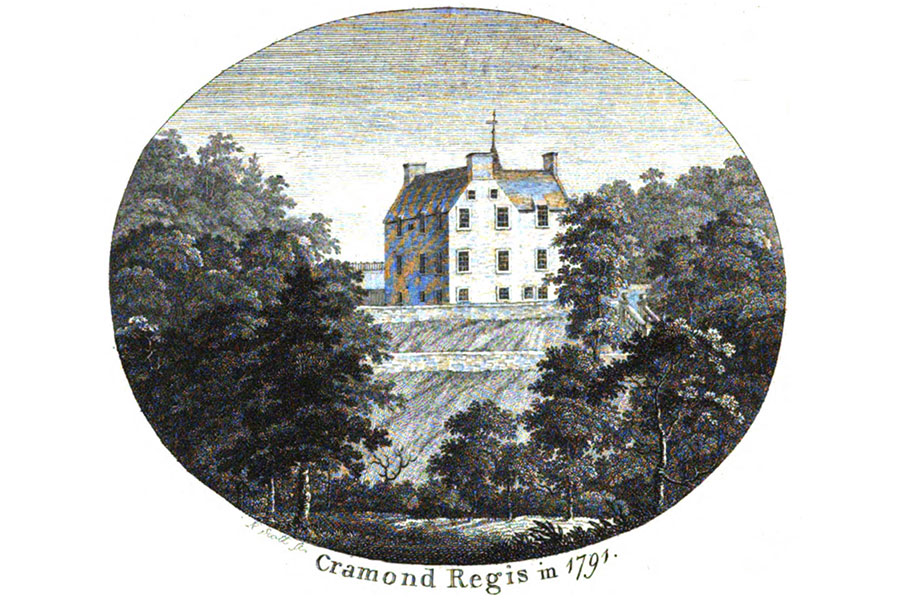

John Philip Wood, Edinburgh, 1794
Cramond Regis, or King’s Cramond, is said to have been a royal hunting seat. In 1316 or 1320 it was given by Robert the Bruce, along with the neighbouring property of Muirhouse, to Sir William Oliphant of Aberdalgie, as compensation for lands in Kincardineshire taken by John Balliol. Oliphant was a loyal supporter of Bruce, and his son, Sir Walter Oliphant, would later marry Bruce’s daughter Elizabeth.
From the 14th to the 17th centuries Cramond Regis passed through the hands of many families, the principal ones being the Cramonds of Cramond, the Mowbrays of Cammo, the Logans of Craighouse and the Logies of Logiesland. Some of these families would have been responsible for substantial building work, as by 1791 Cramond Regis had the appearance of a much-altered L-plan tower house of the 16th or 17th centuries.
In 1718 John Douglas-Hamilton, the first Earl of Ruglen, bought King’s Cramond, as it was then known, adding it to his neighbouring property Barnton and combining them into one estate.
Hamilton was succeeded in 1744 by his daughter, Lady Anne Hamilton, Countess of Ruglen, the widow of William Douglas, the 2nd Earl of March. King’s Cramond and Barnton passed to their son, William Douglas, the 4th Duke of Queensberry and 3rd Earl of March, upon his mother’s death in 1748, but he sold it in 1770 to John Campbell, Viscount Glenorchy, the son of John Campbell, the 3rd Earl of Breadalbane.
Campbell died in 1771, and his wife Willielma lived part time at Barnton before selling the combined estate to William Ramsay, a director of the Royal Bank of Scotland, in 1785.
Ramsay commissioned Robert Adam to remodel King’s Cramond for his son, George Ramsay. Large extensions were built onto the old tower, the steeply-pitched roof was replaced with a new lower one, surrounded by castellations, and a tall round tower was added to the front of the house.
King’s Cramond became the principle residence on the new combined estate, and as such Barnton House became surplus to requirements. Barnton House was demolished around 1800, and King’s Cramond was renamed Barnton House.
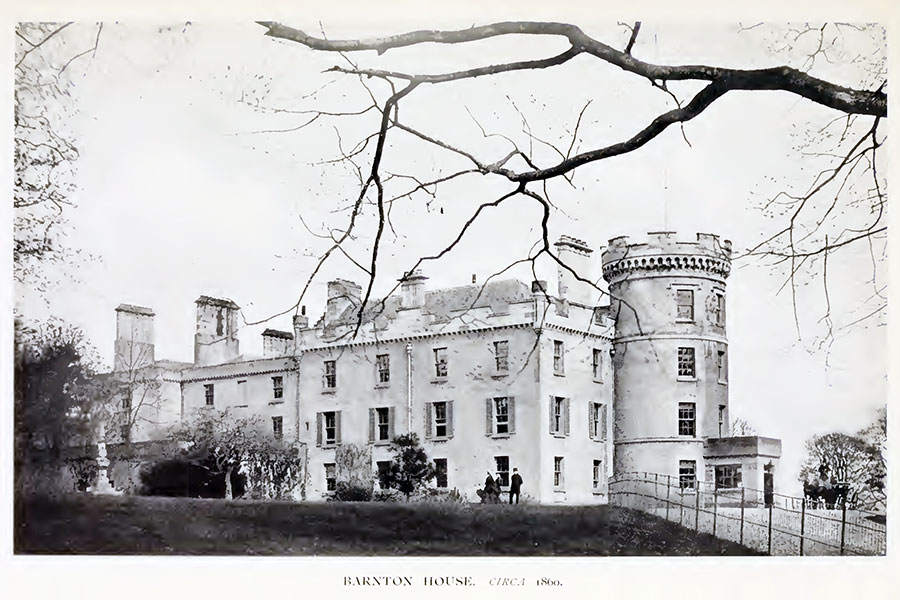
James H Rutherfurd, Edinburgh, 1911
In 1810 further work was carried out on the new Barnton House, with a porch added to the round tower by David Hamilton.
But by the end of the 19th century Barnton was described in estate papers as “interesting but of no use”, and following unsuccessful attempts to rent it out, it lay empty.
In 1908 it was reported that lead had been stolen from the roof, and by 1920 it was in such a bad way that Sir Arthur Steel-Maitland, a Ramsay descendant and the then owner of the Barnton, Sauchie and Bannockburn estates, proposed demolition.
It was demolished around 1920, and possibly at this time some 17th century carved stones and sundials were moved to another Steel-Maitland property, Sauchieburn House to the south-west of Stirling.
Nothing now remains of Cramond Regis, although the golf courses of the Royal Burgess Golfing Society of Edinburgh and the Bruntsfield Link Golfing Society occupy the majority of the former combined Barnton estate policies. The site of the house itself is under number 31 Barnton Avenue West.
Around the old estate of Cramond Regis are the street names Cramond Regis, Regis Court and King’s Cramond.
Alternative names for Cramond Regis
Barnton House; Barntoun House; King's Cramond; Kings Cramond
Where is Cramond Regis?
Cramond Regis is in the parish of Edinburgh and the county of Midlothian.
Grid reference: NT 1884 7580
Lat / long: 55.968362, -3.301751
